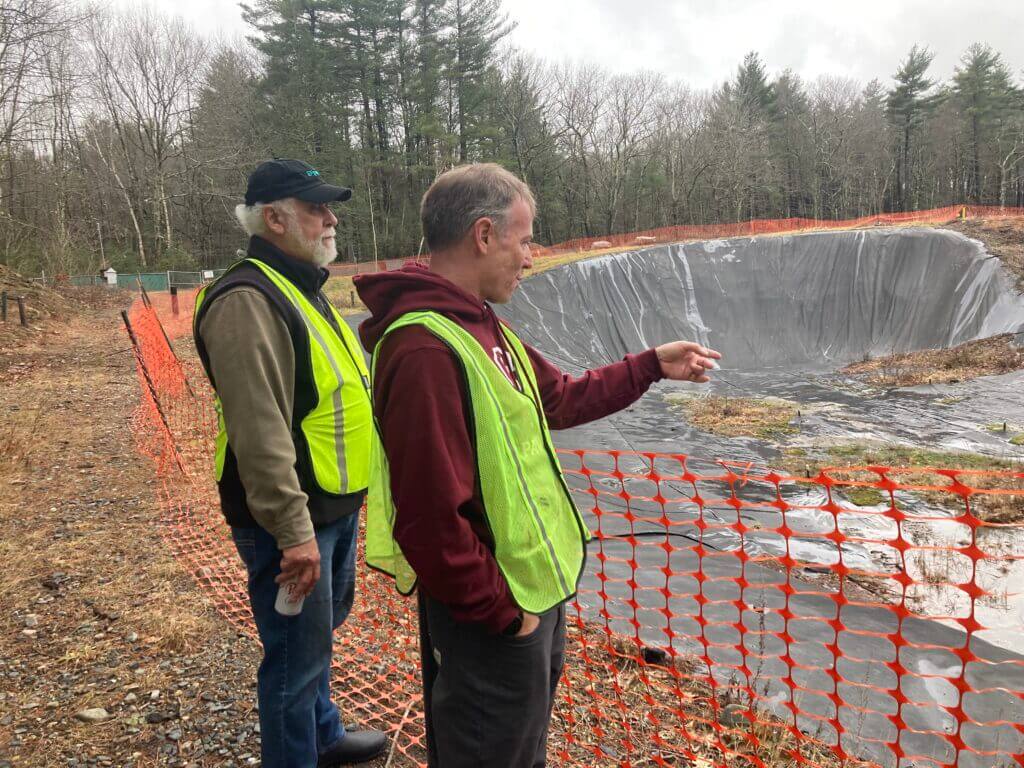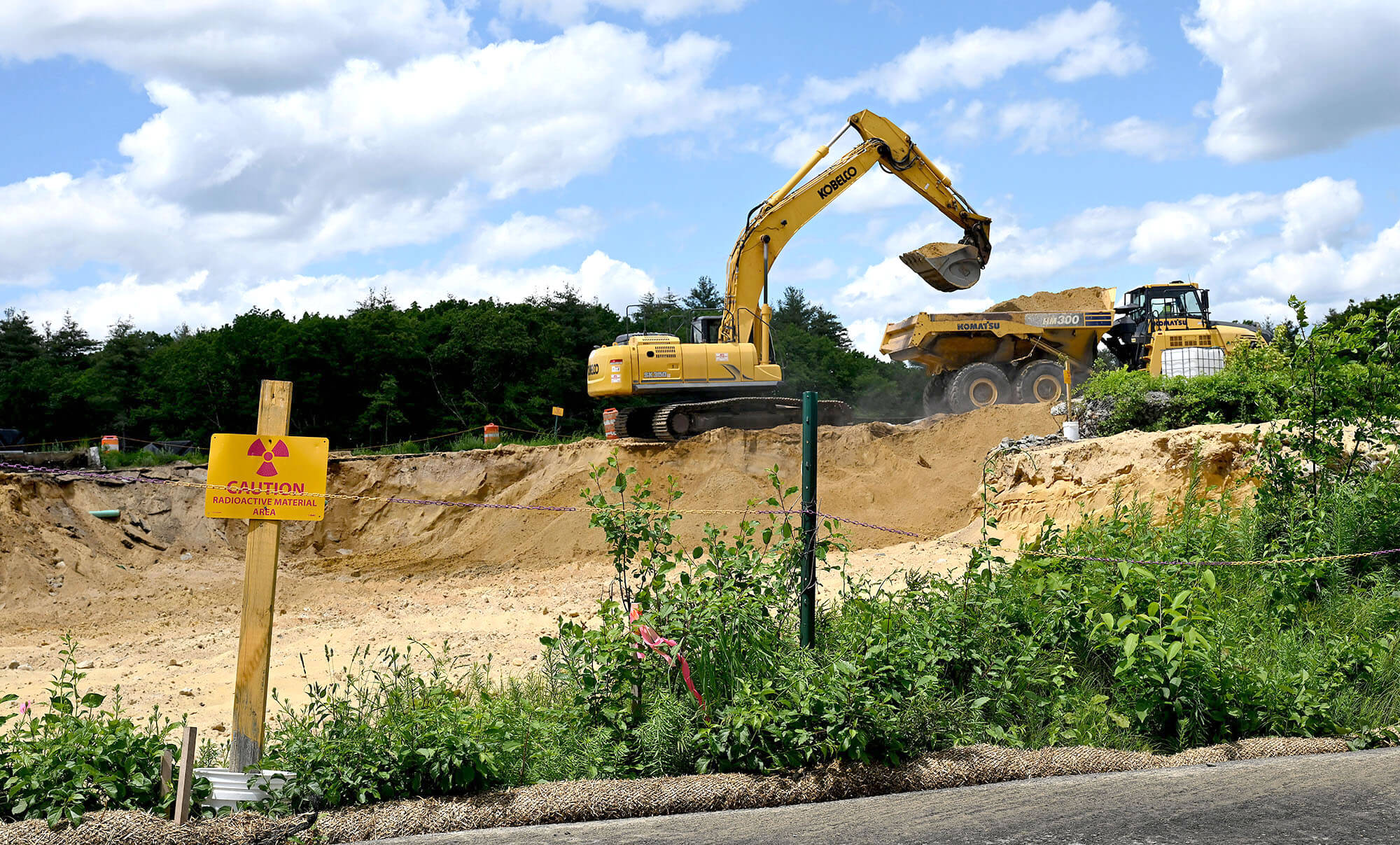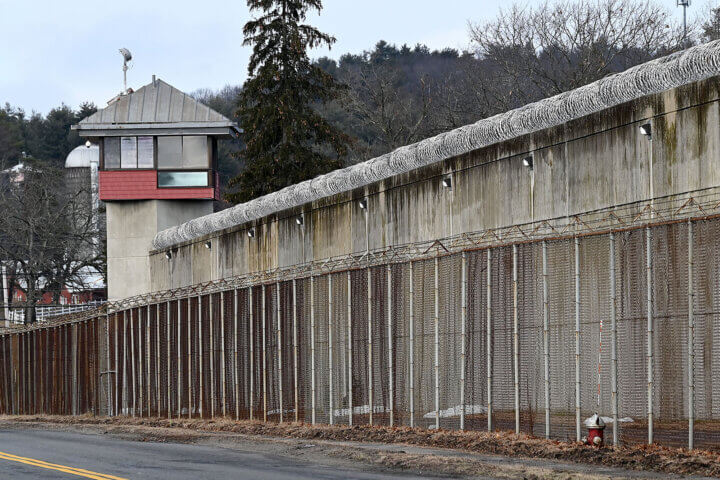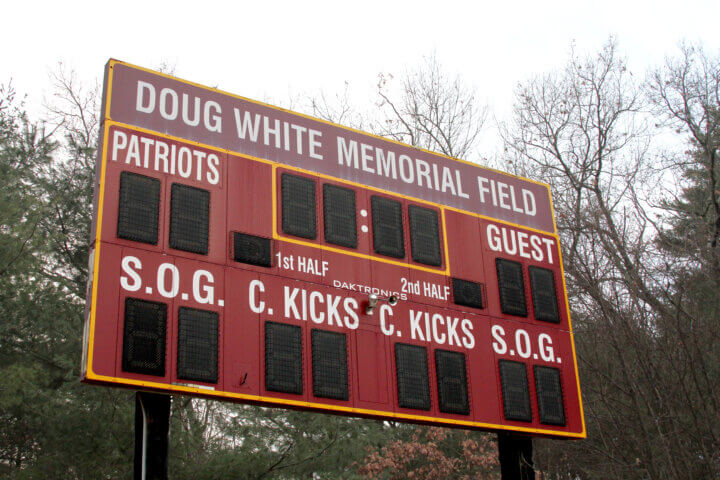By Erin Tiernan — Erin@theconcordbridge.org
A long-contaminated former munitions site in West Concord will be fit for human habitation within five years, federal officials say.
But whether anyone ends up living at 2229 Main Street, a designated federal Superfund site, remains to be seen.
Once the 46-acre site is cleaned up, everything from housing to open space, a public safety complex and even some kind of mixed-use development has been pitched as a possibility.
“Everybody wants to jump to the reuse – how we use it next. I’m cautious of doing that. There are big questions to answer before we start dreaming of what we could do there,” said 2229 Main Street Advisory Task Force Chair Paul Boehm, whose Thoreau Hills home neighbors the property.

On Tuesday, June 4, the task force will hold its second public hearing where officials will shed more light on the health and safety of the site, development possibilities, potential legal issues, and the economics of the various options facing the town, Boehm said.
Concord Select Board members are weighing the pros and cons of the town buying the property. It’s a decision the Environmental Protection Agency — which has led the cleanup effort since the land was designated a Superfund site in 2001 — would like to see Concord make sooner rather than later.
“We are always eager to work with prospective purchasers — whoever they might be — to bring these sites back into reuse,” EPA Project Manager Kara Nierenberg said in a recent interview. “You don’t actually have to wait until the cleanup is done to obtain a site and start that process.”
The timetable
Cleanup of contaminated groundwater, soils, and sediment will continue until late 2028 or early 2029, but Nierenberg said planning in tandem with the ongoing site work could be happening now — something that could save money later on during redevelopment.
“Their ability to make a decision on whether or not they’re going to acquire the property and move forward with that can bring them into the conversation more with our design planning,” she said.
“There are design decisions we’re making on the site almost every day.”
It’s a decision that won’t happen until the fall at the earliest, officials say.
Residents empowered the Select Board to move forward with the land acquisition in a 2015 Town Meeting vote. Local officials have been studying the potential for the town’s involvement in redevelopment since.
A final report from Boehm’s task force that vets various scenarios and will include recommendations for what role the town should take in the redevelopment is due on Halloween.
That document will guide Select Board members in their decision to purchase the property outright, engage in a public-private partnership or focus on zoning and allow the land to go to private development, Boehm said.
Select Board Chairwoman Mary Hartman told The Concord Bridge she hopes things will move “quickly” from there once she and other members have more guidance on protecting town interests.

Risk and reward
Two of the biggest questions facing local officials are the cost and liability to the town.
Forty years of handling depleted uranium in research and manufacturing by defense contractors, including Nuclear Metals Inc., Whittaker, Textron, Inc., and Starmet Corporation, led to a build-up of radioactive waste in the soil, sediment and groundwater at 2229 Main.
Since operations ceased in 1997, a costly, decades-long cleanup effort has ensued.
To date, $215 million has been spent remediating contamination and removing toxic sediment. Costs are expected to top off around $300 million.
Taxpayers are on the hook for about 98 percent of that, with a fund from the former companies found liable for the pollution covering the rest.
Cleanup efforts have included demolition of the former facility, excavation of contaminated materials, installation of a groundwater treatment facility and encapsulation of the former holding basin where hazardous waste was disposed of.
Once the EPA completes the cleanup, roughly half of the land — just over 23 acres — will be open for development. The site is being remediated to the highest possible standard, which allows for residential housing.
The Nuclear Metals Inc. site — as the EPA officially labels it — is one of more than 1,300 contaminated Superfund sites on the National Priorities List. A number of those are in the process of meeting the residential standard, but Nierenberg said it’s “exceedingly rare” to see formerly contaminated industrial sites transformed into housing developments.
The EPA will monitor the site in perpetuity, conducting analyses of the soil, sediment and groundwater every five years.
‘Orphaned‘ land
The West Concord site is considered an “orphaned” property, Nierenberg said, meaning there are no longer companies or individuals with viable ownership rights to the property.
Starmet, the last private company operating there, abandoned the property in 2011 following a bankruptcy. The federal government has taken the lead in cleanup efforts since.
The town has various mechanisms for taking the orphaned land, including seizing the property for nonpayment of back taxes and eminent domain.
In an effort to recoup costs, the federal government placed a lien attached to the property. At least one other private mortgage lien is active.
Nierenberg said the EPA is “not interested in making money” off 2229 Main Street and is looking to start negotiations with the town on the federal lien. She said the terms of a settlement agreement with the EPA would likely include some type of profit-sharing percentage, should the town ever sell or turn a profit on the site.
“The EPA wants to see all of these properties put back into use,” Nierenberg said.
“We have these contaminated lands. We’re investing time and resources into cleaning them up. One of the best things we see is getting these properties resolved on the other side and having something to show for it and not having them just sit there as blighted properties.”
The 2229 Main Street Advisory Task Force holds its next hybrid meeting at 7 p.m. on Tuesday, June 4, at the Town House Public Hearing Room, 22 Monument Square. Residents can also tune in online via Zoom.






